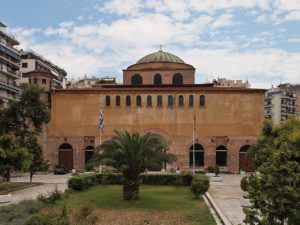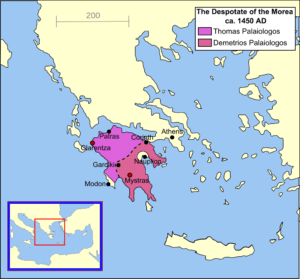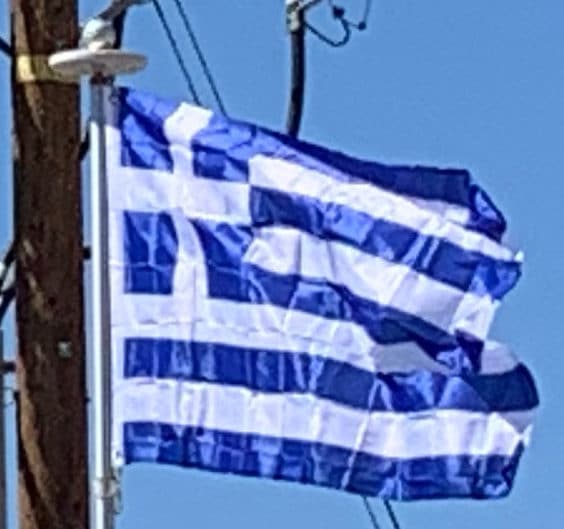Until the 8th century almost all of modern Greece was under the jurisdiction of the Holy See of Rome according to the system of Pentarchy. Byzantine Emperor Leo III moved the border of the Patriarchate of Constantinople westward and northward in the 8th century.
The Byzantine recovery of lost provinces began toward the end of the 8th century and most of the Greek peninsula came under imperial control again, in stages, during the 9th century. This process was facilitated by a large influx of Greeks from Sicily and Asia Minor to the Greek peninsula, while at the same time many Slavs were captured and re-settled in Asia Minor and the few that remained were assimilated. During the 11th and 12th centuries the return of stability resulted in the Greek peninsula benefiting from strong economic growth – much stronger than that of the Anatolian territories of the Empire. During that time, the Greek Orthodox Church was also instrumental in the spread of Greek ideas to the wider Orthodox world.
Following the Fourth Crusade and the fall of Constantinople to the “Latins” in 1204 mainland Greece was split between the Greek Despotate of Epirus (a Byzantine successor state) and French rule (known as the Frankokratia), while some islands came under Venetian rule. The re-establishment of the Byzantine imperial capital in Constantinople in 1261 was accompanied by the empire’s recovery of much of the Greek peninsula, although the Frankish Principality of Achaea in the Peloponnese and the rival Greek Despotate of Epirus in the north both remained important regional powers into the 14th century, while the islands remained largely under Genoese and Venetian control. During the Paleologi dynasty (1261–1453) a new era of Greek patriotism emerged accompanied by a turning back to ancient Greece.

As such prominent personalities at the time also proposed changing the imperial title to “Emperor of the Hellenes”, and, in late fourteenth century, the emperor was frequently referred to as the “Emperor of the Hellenes”. Similarly, in several international treaties of that time the Byzantine emperor is styled as “Imperator Graecorum”.
In the 14th century, much of the Greek peninsula was lost by the Byzantine Empire at first to the Serbs and then to the Ottomans. By the beginning of the 15th century, the Ottoman advance meant that Byzantine territory in Greece was limited mainly to its then-largest city, Thessaloniki, and the Peloponnese (Despotate of the Morea).

After the fall of Constantinople to the Ottomans in 1453, the Morea was one of the last remnants of the Byzantine Empire to hold out against the Ottomans. However, this, too, fell to the Ottomans in 1460, completing the Ottoman conquest of mainland Greece. With the Turkish conquest, many Byzantine Greek scholars, who up until then were largely responsible for preserving Classical Greek knowledge, fled to the West, taking with them a large body of literature and thereby significantly contributing to the Renaissance.
Venetian Possessions and Ottoman Rule (15th century – 1821):
While most of mainland Greece and the Aegean islands was under Ottoman control by the end of the 15th century, Cyprus and Crete remained Venetian territory and did not fall to the Ottomans until 1571 and 1670 respectively. The only part of the Greek-speaking world that escaped long-term Ottoman rule was the Ionian Islands, which remained Venetian until their capture by the First French Republic in 1797, then passed to the United Kingdom in 1809 until their unification with Greece in 1864.
